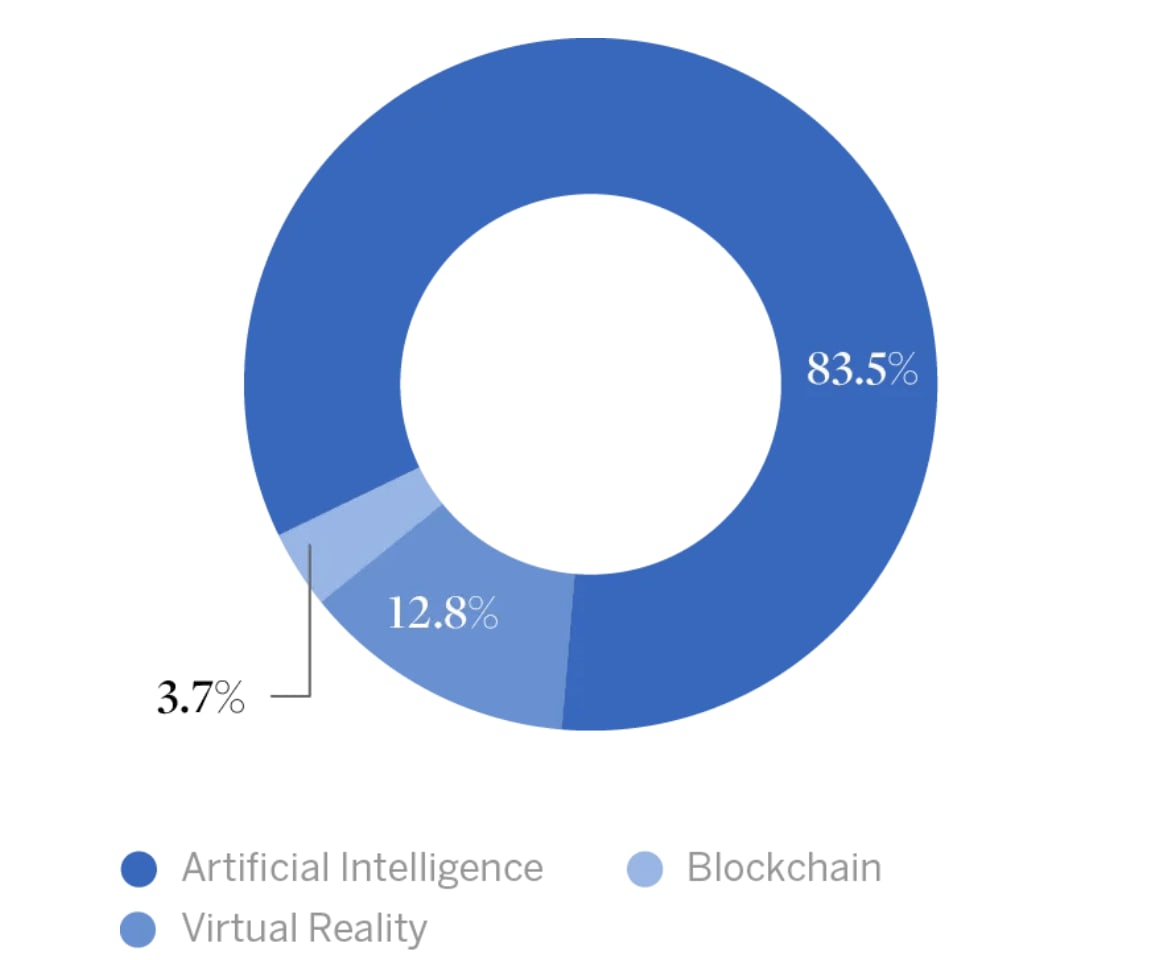The real estate industry has faced many tech shake-ups. From the rise of the Multiple Listing Service to algorithm-based instant buying, savvy agents have adopted the technology necessary to better serve clients. The past three years, however, have seen an unprecedented advancement of tools that were already reshaping the real estate landscape, brought on by the challenges of remote life during the pandemic. Along with the rise of artificial intelligence and data analytics, smart-home technology, and sustainable construction—the real estate industry’s tech acceleration is providing unparalleled opportunities for agents willing to adapt, helping homebuyers and sellers research and make moves more seamlessly—and in some cases dynamically—than ever before.
Bridge to the Possible
“Virtual and augmented reality are revolutionizing the property-viewing experience for buyers,” explains Ena Pereda of ONE Sotheby’s International Realty in Miami, Florida. “The portability, the interactivity of virtual staging and real-time property modifications, as well as the ability to explore real estate globally, have completely transformed the real estate purchase process.” Detailed 3-D virtual-reality platforms, which synthesize drone technology and 360-degree camera footage with AI capabilities and data analytics, capture both the macro and micro views of a home. Buyers can “walk through” available properties and explore those spaces remotely—enjoying the panoramic view from a living-room terrace or examining the finest details of cabinet fixtures—without ever having stepped inside. In fact, Sotheby’s International Realty was an early adopter of these technologies, integrating them since 2016.
Augmented reality is another cutting-edge tool giving real estate agents an edge. “Buyers can not only interact with a space—let’s say open doors or turn on and off lights—but with design apps, they can also actually visualize changes or even full renovations before they make a purchase,” Pereda says. By incorporating up-to-the-minute neighborhood logistics, school ratings, and local amenities, combined VR and AR tech gives buyers a landslide of sensory and analytical information. They offer an exceptional sense of ownership over a space, blurring borders and broadening possibilities. “Buyers and sellers have a global community they can virtually explore at their fingertips,” says Pereda. “This in turn is empowering real estate professionals by enhancing marketing capabilities, expanding our reach to remote buyers, and improving overall customer engagement.”
Real Estate in (Virtual) Paradise
Joe Zahm, president, Turks & Caicos Sotheby’s International Realty, is one agent who’s utilizing innovative technology to turn the concept of remote on its head. Zahm has traditionally contended with accessibility issues when showcasing properties. With 40 far-flung islands in the middle of the Caribbean, Turks & Caicos is highly desirable for its combination of preserved natural beauty and its remote, edge-of-the-world island appeal—but that’s also presented an impediment for buyers hoping to jump into the local luxury-home market. “It’s a great distance to drive, or boat, or even fly between available properties,” Zahm says.
Zahm found a solution to this problem in the Immersion Theater platform, which captures entire resort destinations through enhanced 3-D technology and a bird’s-eye view from drones, then projects the interactive image onto a 9-by-16-foot screen. “Essentially it shrinks the universe and absorbs properties, projects, and neighborhoods,” says Zahm of the platform, which is fully merged with the MLS. “Lower-priority properties can be quickly ruled out and buyers create a more desirable short list.”
In a vacation market like Turks & Caicos, the Immersion Theater platform solves another problem—access. “Interesting properties are often rented and unavailable to show when buyers are visiting,” explains Zahm. “Immersion Theater allows potential buyers to experience a rented property and either eliminate or add it.” Sellers are equally excited by the possibilities the platform presents. Not only can they see their properties showcased in an optimal, impactful way, the platform reduces the number of in-person showings necessary for a sale. This prospect is especially valuable to luxury real estate owners. “Sellers of higher-priced homes with longer than average days on the market are open to extending their listing agreements,” Zahm says. “They know they can continue to maximize their rental income due to the reduced number of in-person showings.”
Bringing Plans to Life
The one-two punch of enhanced 3-D technology and analytics has also proved a boon for new construction projects. “Our developers are completely blown away with the possibilities our tech presents,” Zahm says. “The combination of drone and 3-D modeling brings preconstruction projects to life. Developers then get ideas about how to optimize their schematic concept and designs.” Not only do 3-D models and drones aid in site assessment and precise planning, but they’re also enhancing efficiency and reducing construction costs, Pereda says. “Sustainable construction, smart-home technologies that monitor and optimize resource usage and cybersecurity measures, are all becoming increasingly important in new developments.”
Tech advancements are making predevelopment sales much more palatable for buyers, too. Enhanced 3-D renderings make developments tangible long before they’re completed, and drones allow buyers to monitor projects in real time.
Looking Ahead
Sotheby’s International Realty agents weighed in on which cutting-edge technologies are likely to have the biggest impact on the real estate industry in the next five years.
Source: Sotheby’s International Realty Luxury Outlook 2024 Agent Survey
Investing in People
“Technology isn’t here to displace agents,” explains Anton Danilovich, real estate broker, Golden Gate Sotheby’s International Realty in California, and founder of the real estate analytics platform TopHap. “Real estate is always going to need experienced professionals with extensive local knowledge to facilitate transactions and stand with clients. But if agents embrace tech with open arms, it’s going to make them better, faster, stronger, smarter professionals.” Danilovich began flipping properties early in his real estate career, which attracted builders and developers as clients. “My job quickly became about assessing opportunities in different markets,” he explains. “But real estate is essentially local. Most agents are deeply rooted in their own area, but if they move five miles in any direction, they become a fish out of water.” The process of researching potential investments was time-consuming, even before he drove, or flew, to see a property.
To solve that problem for himself and other agents, Danilovich partnered with software developer Dennis Khvostionov to found TopHap. Building on 60 years of data gathered from aggregators, the department of transportation and NASA flight missions, the company created 3D topography models for properties throughout the U.S., then layered in data sets—everything from real-time market updates to environmental factors to noise levels to rental potential—and visualized it all as an online, navigable heat map. “Now agents can do a detailed property analysis in about 60 seconds,” Danilovich says. “It empowers agents with data to back up their expertise,” he adds.
Metaverse Meets Reality
In the fall of 2023, ONE Sotheby’s International Realty sold a new-construction home in Miami’s Pinecrest village for US$11.2 million. Impressive by any standards, this one had an interesting hook—dubbed Meta Residence, it was the world’s first “MetaReal” Mansion, a real-world house with a digital twin in the Sandbox Metaverse. The all-cash transaction—which obtained the highest price per square foot in Pinecrest at US$1,335— was a collaboration between ONE Sotheby’s International Realty, Voxel Architects, and NFT collector and contractor Gabe Sierra of Sierra Development. The purchaser received both the NFT of the asset and the physical home, which are mirror images of each other. “It was a fun effect,” says Michael Martinez, real estate agent and vice president, ONE Sotheby’s International Realty, who represented the buyer and the seller. While the NFT may not have sold the house, “it was the cherry on top,” he says. “It was different, fun, and the buyer liked the idea.”
The novelty garnered attention, while, at the same time, proved that agents are staying up to date with what’s new. “We’re always immersing ourselves in the latest technologies and trends,” Martinez says. “There’s a lot of young, savvy people who are becoming ultra wealthy, so anything we can do to change the traditional real estate model, we embrace.”
He’s always open to learning new things, he says. “We have to adjust for the times and for individual markets.”
“We’re always immersing ourselves in the latest technologies and trends—There’s a lot of young, savvy people who are becoming ultra wealthy, so anything we can do to change the traditional real estate model, we embrace."
Michael Martinez
Real Estate Agent and Vice President, ONE Sotheby’s International Realty





